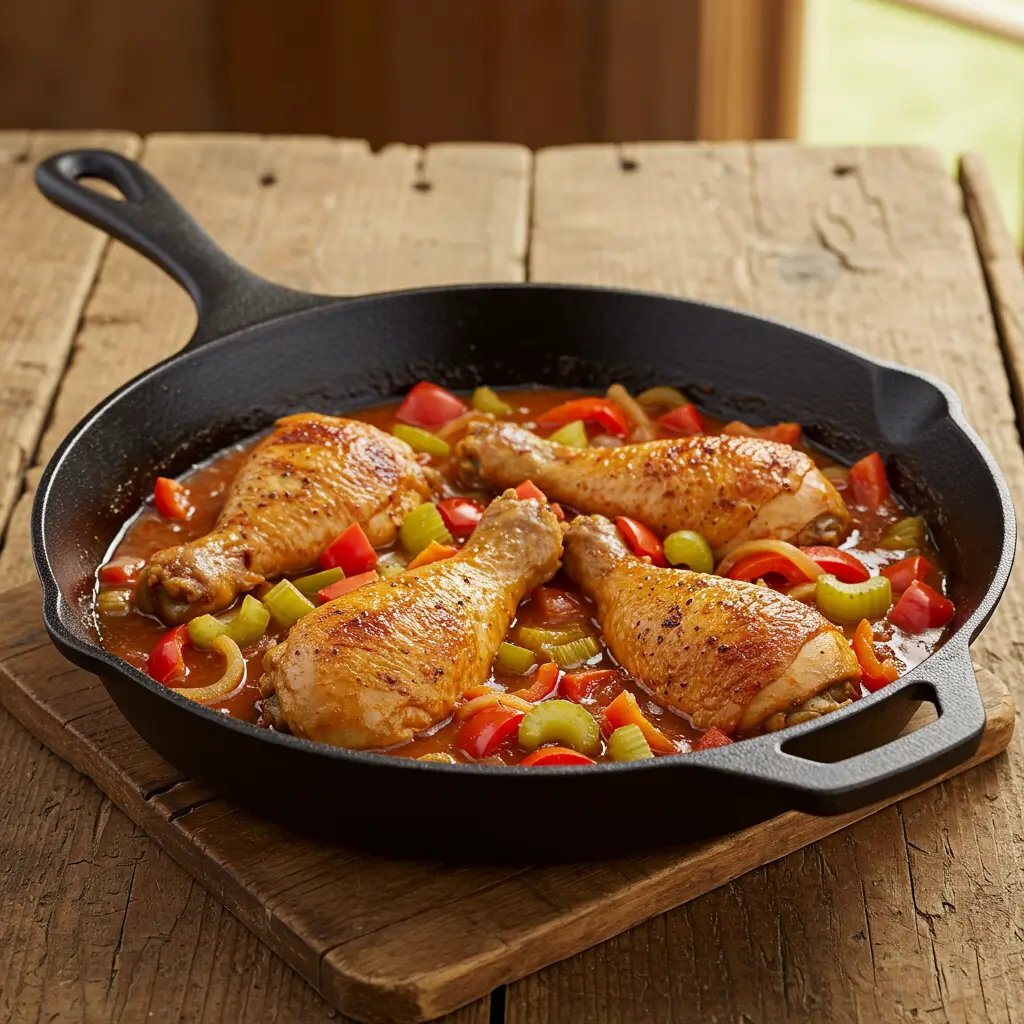Creole chicken is more than just a meal—it’s a story of culture and spice simmered into one unforgettable dish. Born in Louisiana’s Creole kitchens, this recipe blends French, Spanish, African, and Caribbean influences, creating flavors as vibrant as New Orleans itself. If you’ve ever enjoyed shrimp creole or chicken Cajun, you’ll instantly recognize the same soulful balance of heat and comfort in this dish. In this guide, we’ll explore the roots of Creole cooking, share step-by-step instructions, and answer common questions like “What is Creole sauce?” so you can bring this timeless favorite to your table.
Table of Contents
Table of Contents
The Story and Heart of Creole Chicken
A Memory Served with Spice
My journey with this dish began far from Louisiana, in a small kitchen overlooking the Monterey pier. My father ran a modest seafood stand there, and though we specialized in fresh snapper and shrimp, I was drawn to the flavors of the South. I remember tasting gumbo for the first time—steam rising from the pot, the sauce thick with tomatoes, peppers, and spices. It reminded me of home, yet also introduced me to something bold and new. Whether blackened at restaurants like the Cactus Club or fried at a neighborhood spot, this recipe always carried layers of warmth, a story told through every bite.
What Sets Creole Flavors Apart
Many people wonder what separates a Creole stew from Cajun cooking. The difference lies in complexity. Cajun dishes tend to be rustic and smoky, while Creole cuisine celebrates tomatoes, herbs, and rich sauces. Imagine shrimp creole—hearty, rich, and colorful. Now replace the seafood with chicken, and you have something just as soulful, whether simmered into pasta, paired with rice, or baked in the oven. At its heart lies the “holy trinity” of onion, bell pepper, and celery, simmered into a sauce that clings to every bite. Paired with rice or cornbread, it becomes a meal meant to bring people together.
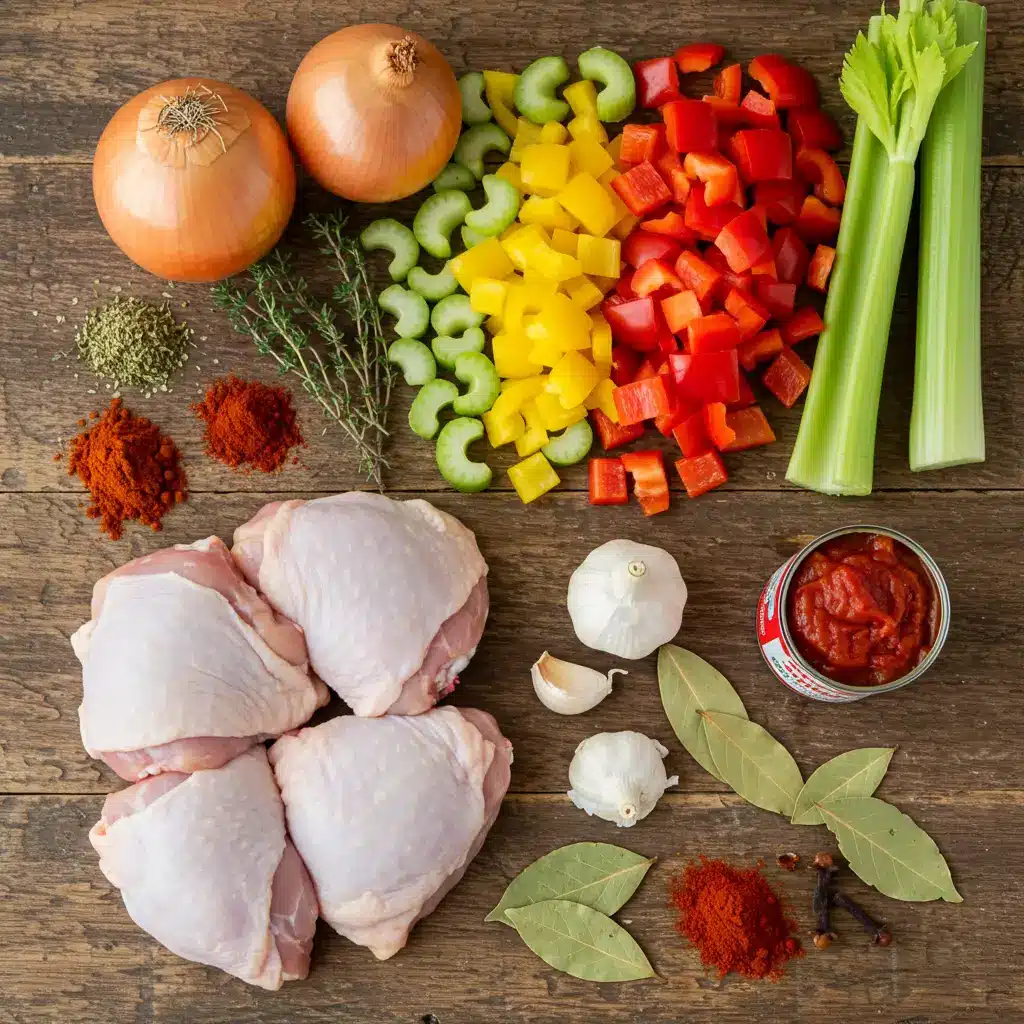
When you explore the roots of Southern food, you’ll find recipes like shrimp creole alongside classics such as hearty family dinners and seafood favorites. This chicken dish fits beautifully within that tradition, bringing spice and comfort together in one plate.
Cultural Significance and Recipe Variations
The Soul of Creole Cuisine
Creole chicken isn’t just a recipe—it’s part of Louisiana’s culinary identity. In New Orleans, Creole food reflects centuries of cultural blending: French sauces, Spanish spices, African cooking methods, and Caribbean influence. When you sit down to a plate of creole chicken and rice, you’re tasting history. The dish connects generations, often served at family gatherings, church suppers, or local festivals. Much like gumbo or shrimp creole, it embodies the idea of sharing not just food but community. That’s why variations of this dish appear worldwide, from Haitian creole chicken to blackened creole chicken in modern restaurants.
Delicious Variations to Try
What makes creole chicken versatile is its ability to adapt. Some home cooks bake it, creating a tender and slightly smoky flavor. Others prefer fried creole chicken, giving the dish a crispy edge while keeping the rich sauce on the side. Pasta lovers enjoy creole chicken pasta, where creamy sauce blends with peppers and Cajun seasoning for comfort in a bowl. You’ll even find unique versions like cactus club creole chicken or blackened creole chicken wings on menus across North America.
At home, I love experimenting with creole chicken alongside other bold dishes. For example, pairing it with buffalo chicken chili creates a spicy, satisfying spread. On lighter nights, I’ll serve it with a fresh street corn chicken salad, which balances the heat with sweetness and crunch. These pairings highlight how Creole chicken isn’t locked into one tradition—it’s flexible, approachable, and endlessly exciting.
Creole chicken continues to evolve, yet its roots in the “holy trinity” of onion, bell pepper, and celery remain sacred. Whether it’s baked, blackened, or simmered into gumbo, each variation honors the tradition while making space for creativity.
Cooking Techniques and Seasoning Secrets
Building Flavor the Right Way
A great creole chicken recipe starts with the basics: the “holy trinity” of onion, bell pepper, and celery. This combination lays the foundation of flavor, much like garlic and olive oil do in Italian cooking. Once softened, add garlic, tomatoes, and spices to form the sauce base. Browning the chicken first—whether thighs, drumsticks, or breasts—locks in juices and gives the sauce richness. Slow simmering is the secret here, allowing the seasoning to meld until every bite bursts with flavor. For a smokier take, many chefs prepare blackened creole chicken, searing it with butter and spices in a hot skillet.
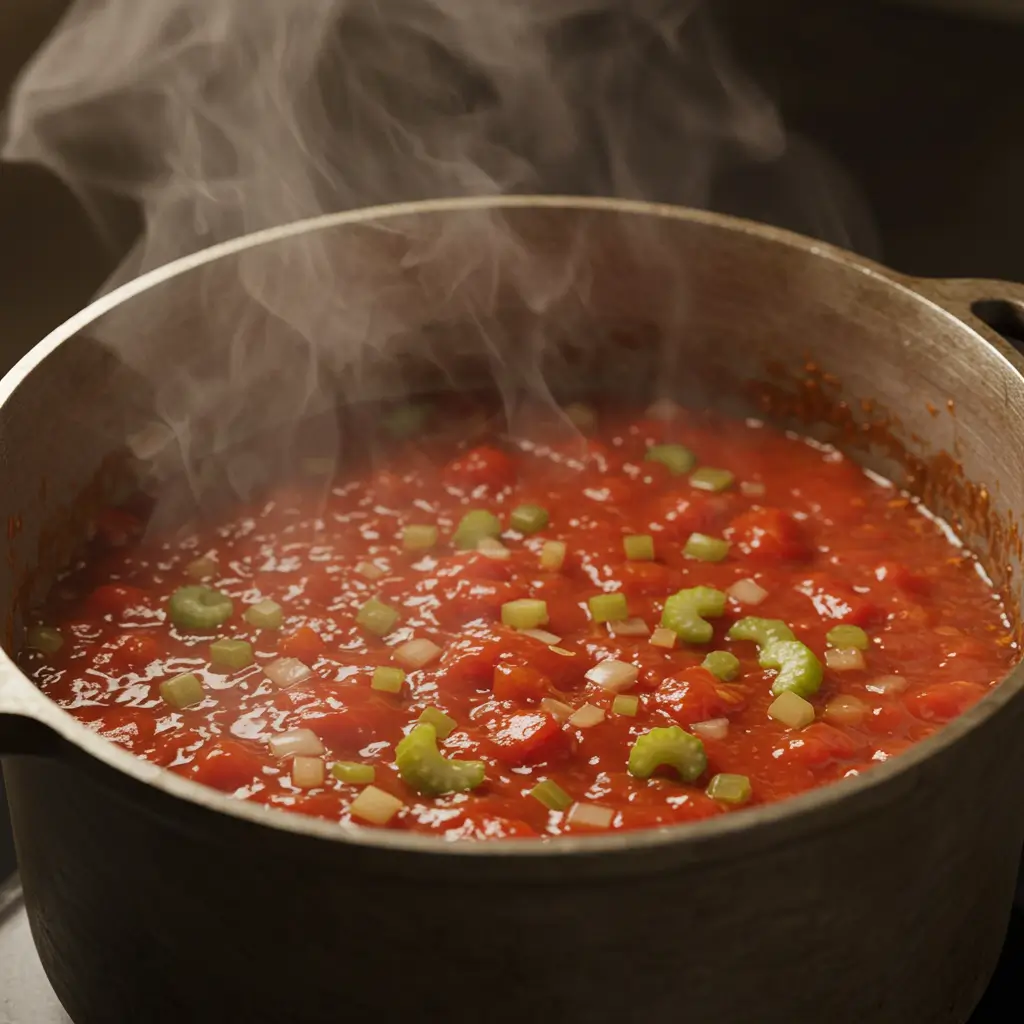
Choosing and Balancing Seasonings
The spices define the soul of Creole cooking. A traditional blend includes paprika, cayenne, oregano, thyme, and black pepper, with variations depending on personal taste. Some cooks add a dash of hot sauce or Worcestershire for depth. Gumbo versions often use flour and oil to create a rich roux, while pasta-based dishes lean creamier, adding heavy cream or cheese. If you’re new to making creole chicken gumbo, start by mastering the roux—it gives the dish its signature body. Want to turn up the heat? Add more cayenne, but balance it with acidity from tomatoes or lemon juice.
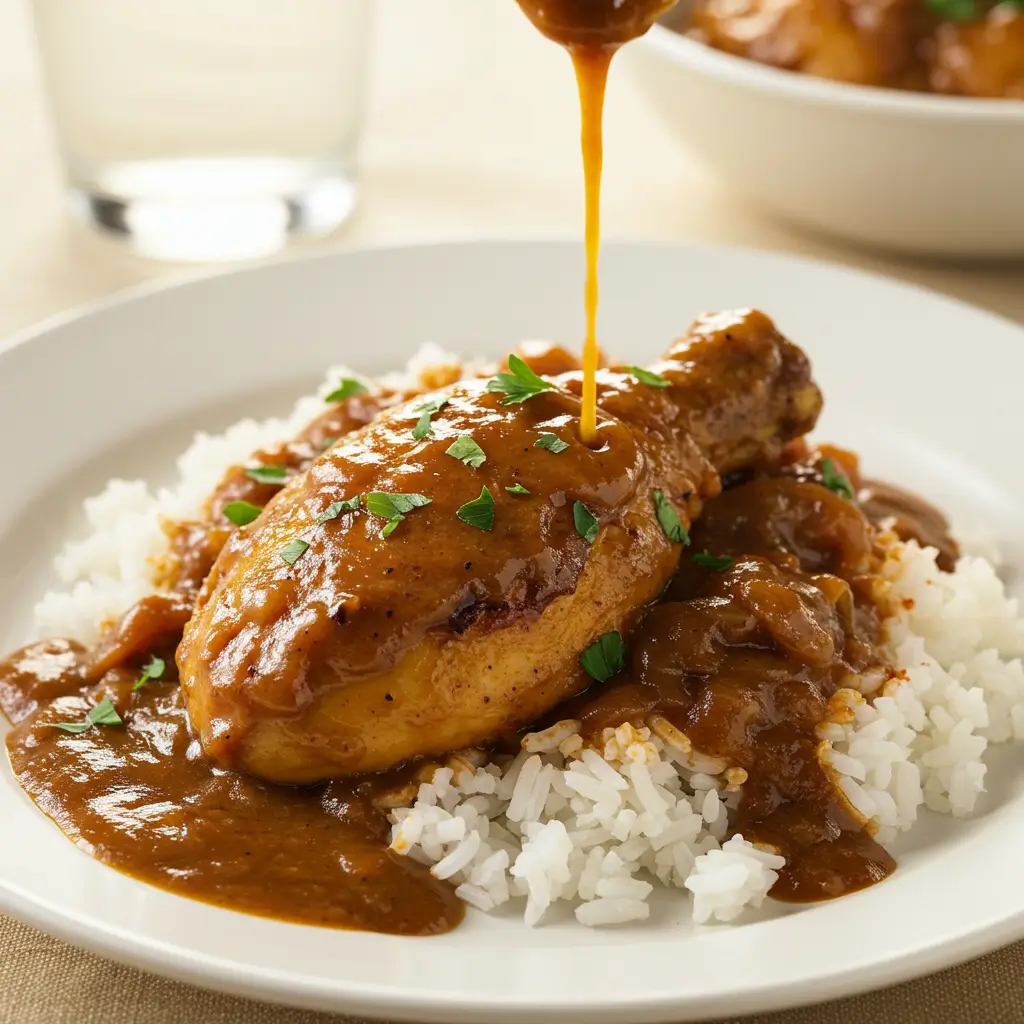
In my kitchen, I like to experiment by pairing this recipe with other bold dishes. Serving it alongside garlic parmesan chicken thighs creates a feast of flavors, while a side of lemon pepper chicken cutlets adds a citrusy lift. These combinations highlight the flexibility of Creole seasoning—it’s strong enough to stand alone, yet versatile enough to complement other flavors.
Whether you’re simmering gumbo, tossing pasta, or searing blackened chicken, the key is patience. Letting the spices slowly develop ensures your dish captures the true heart of Creole cuisine.
Serving Ideas and Perfect Pairings
From Weeknight Dinner to Party Favorite
One of the best things about Creole chicken is its versatility at the table. It works as a cozy weeknight dinner or as the star of a festive spread. For everyday meals, creole chicken and rice is a classic—simple, filling, and satisfying. At gatherings, creole chicken wings or blackened drumsticks are always a hit, offering bold flavor in bite-sized portions. Gumbo-style recipes with sausage transform it into a one-pot feast, perfect for feeding a crowd. You can even try creole chicken soup on colder days; it’s lighter but still captures the signature spices that define the dish.
Sides and Pairings That Shine
The right sides make this recipe unforgettable. Traditional pairings include white rice, cornbread, or creamy grits, each soaking up the sauce beautifully. For a modern twist, I like serving it with roasted vegetables or even pasta tossed in light cream sauce. A tangy coleslaw balances the spice, while sweet corn muffins bring contrast. Want something heartier? Try serving this dish alongside instant pot chicken Alfredo for a Southern-meets-Italian dinner, or pair it with unstuffed zucchini casserole for a comforting vegetable side.
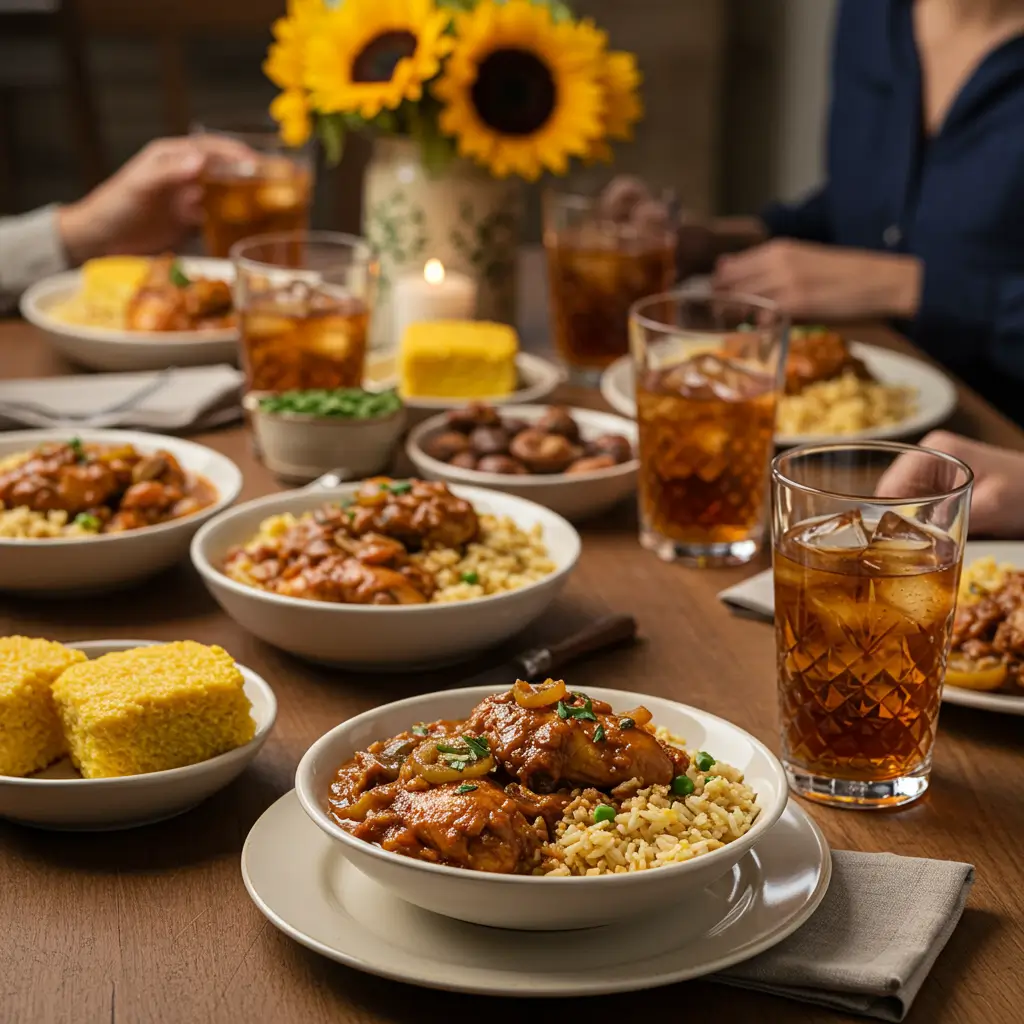
Creole chicken doesn’t stop at traditional plates. It’s also fantastic in wraps, over salads, or as a topping for loaded baked potatoes. And for those who like experimenting, creole chicken pasta with shrimp offers a rich surf-and-turf option that impresses every time. The beauty of this dish is that it adapts—whether baked, blackened, or simmered in gumbo—without ever losing its Creole soul.
Frequently Asked Questions
What is Creole chicken?
Creole chicken is a Louisiana dish that combines chicken with tomatoes, peppers, onions, celery, garlic, and a blend of Creole spices. It can be simmered into a stew, baked, or served over rice. Unlike chicken Cajun, it often uses tomato-based sauces for a richer flavor.
What exactly is Creole sauce?
Creole sauce is a tomato-based mixture made with the “holy trinity” of onions, bell peppers, and celery, combined with garlic, spices, and sometimes stock or wine. It’s versatile, serving as the base for shrimp creole, gumbo, and chicken dishes.
What does Creole sauce taste like?
Creole sauce is bold, savory, and slightly spicy. The tomatoes add tang, while the peppers and onions create depth. Depending on the seasoning blend, it can range from mild to fiery, but it always has a rich, layered taste that defines Creole cuisine.
What is the English Creole chicken?
In the U.K., Creole chicken usually refers to a tomato and pepper–based chicken dish seasoned with Creole spices. While inspired by Louisiana cooking, it often adapts to local tastes, sometimes with less heat or creamier textures compared to traditional New Orleans recipes.
Conclusion
Creole chicken isn’t just another recipe—it’s a celebration of flavor, history, and community. From gumbo and pasta to blackened wings and baked casseroles, the variations prove just how versatile this dish can be. Whether you’re simmering a pot for family or experimenting with modern twists, the balance of spices, tomatoes, and the “holy trinity” guarantees a meal that’s soulful and satisfying. If you’ve ever enjoyed shrimp creole or chicken Cajun, this dish will feel both familiar and fresh. Bring it to your table, share it with friends, and let every bite remind you of the rich Creole tradition.
PrintCreole Chicken Recipe: Bold Southern Flavor Made Simple
This Creole chicken recipe is packed with bold spices, simmered in a tomato-based sauce with onion, bell pepper, and celery, and served with rice for a comforting Southern meal.
- Prep Time: 15 minutes
- Cook Time: 35 minutes
- Total Time: 50 minutes
- Yield: 4 servings 1x
- Category: Dinner
- Method: Stovetop
- Cuisine: Creole, Southern
Ingredients
4 chicken thighs (bone-in, skin-on)
2 tbsp olive oil
1 onion, diced
1 green bell pepper, diced
2 celery stalks, diced
3 garlic cloves, minced
1 can diced tomatoes (14 oz)
1 cup chicken stock
2 tbsp Creole seasoning
1 tsp paprika
1/2 tsp cayenne pepper
Salt and black pepper to taste
Cooked white rice, for serving
Instructions
1. Heat oil in skillet and brown chicken on both sides.
2. Remove chicken, sauté onion, bell pepper, celery, and garlic until softened.
3. Add diced tomatoes, stock, and spices, stirring well.
4. Return chicken to skillet and simmer 30–35 minutes, covered.
5. Serve hot over cooked white rice with sauce spooned on top.
Notes
Adjust cayenne for more or less heat.
Use chicken breasts instead of thighs if preferred.
Pair with cornbread, coleslaw, or roasted vegetables.
Nutrition
- Serving Size: 1 plate
- Calories: 420
- Sugar: 6g
- Sodium: 890mg
- Fat: 24g
- Saturated Fat: 6g
- Unsaturated Fat: 15g
- Trans Fat: 0g
- Carbohydrates: 22g
- Fiber: 4g
- Protein: 31g
- Cholesterol: 95mg
Let’s Stay Connected: Love recipes like these Creole chicken? Follow us on Pinterest for daily inspiration, catch full video walkthroughs on YouTube, and join the flavor-loving community on Facebook. For more delicious meals, visit MyFamilyPlates and browse all our recipes.

